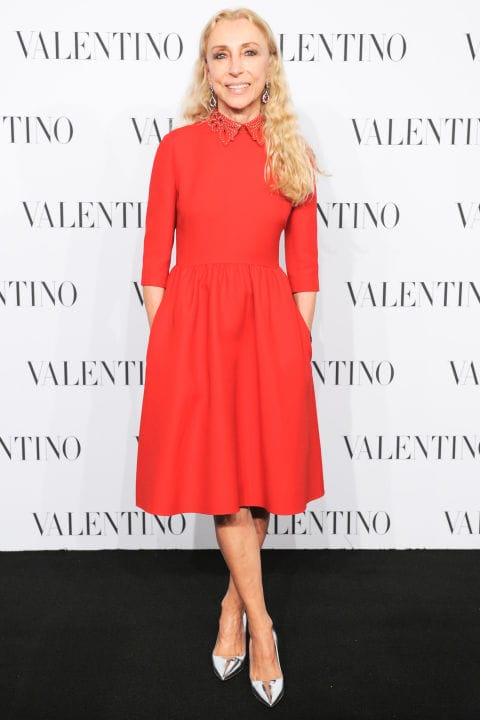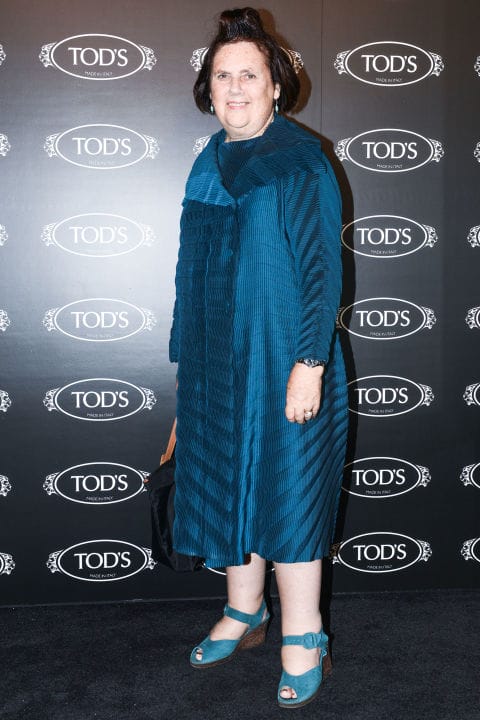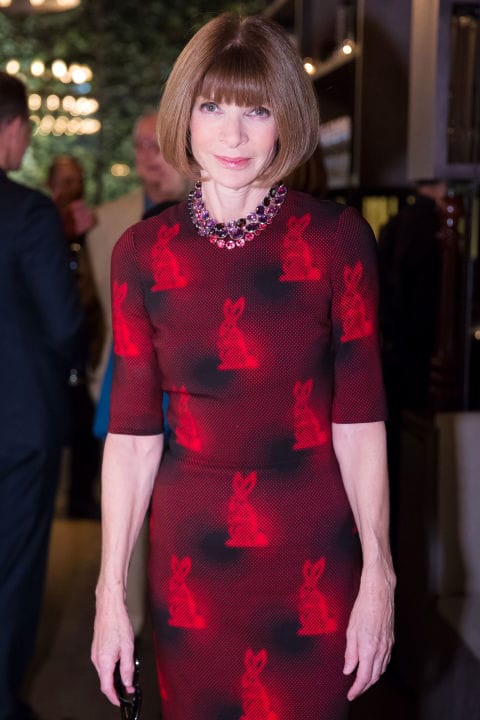
Image: Getty and BFA
The influence of the editor is undeniable. She brings forward a new and unique vision, increases a publication’s circulation, and expands its business reach. As editors and writers, women have impacted fashion, and their influence can reach a global scale—through their opinions, their sharp eyes, and even a little controversy.
#1. Carmel Snow and Diana Vreeland

Image: Getty
Carmel Snow: From 1934 to 1958, Carmel Snow served as Harper’s BAZAAR’s editor. She redefined the meaning of fashion magazine by allocating space for photography, art, homes, and fiction writing in the magazine’s pages—in addition to regular fashion stories. Her motto was “Elegance is good taste plus a dash of daring,” and its influence can still be seen in BAZAAR’s pages today.
Diana Vreeland: Harper’s BAZAAR’s own Diana Vreeland has often been referred to as The Empress of Fashion. She was a tastemaker, defining fashion through her exploration and constant determination of the next big thing. During her tenure at BAZAAR (1936-62), she propelled Lauren Bacall into fame by making her the cover girl of the March 1943 issue, and her infamous “Why Don’t You?” column still resonates today.
#2. Grace Mirabella

Image: Getty
In 1971, when Grace Mirabella replaced Diana Vreeland as Editor-in-Chief of Vogue, she shocked the fashion world. Mirabella wasn’t editorial; she came from the business world. Her parents were Italian immigrants, not socialites, and her only connection to the magazine was that she had worked diligently as Vreeland’s former assistant. But in 17 years, she tripled the magazine’s circulation and proved that business skills are vital in the editorial world. She also supported American designers such as Geoffrey Beene and Calvin Klein, ushering in an era of wearability for the everyday woman. In the ’90s, she started her own successful publication, Mirabella.
#3. Ingrid Sischy

Image: BFA
The influential South-African writer created an intersection of fashion, art, and culture that still exists in popular publications today. As the editor of Artforum, she featured a model in a bodysuit by Issey Miyake on the cover in 1982. She began writing forThe New Yorker on fashion and photography before becoming Editor-in-Chief of Interview. Until her recent death, she worked as a Contributing Editor of Vanity Fair, merging some of her trademark topics together with celebrity culture, and interviewing everyone from Madonna to John Galliano.
#4. Franca Sozzani

Image: BFA
Since 1988, Franca Sozzani has been the groundbreaking editor of Vogue Italia. As a huge supporter of the democratisation of fashion, she regularly styles fast fashion with luxury on her pages. She has also been instrumental in supporting all ethnicities and sizes when it comes to models: Sozzani has featured multiple plus-sized models on covers, devoted an entire issue to all-black models and an issue of L’Uomo Vogue to African culture.
#5. Suzy Menkes

Image: BFA
The celebrated fashion critic spent 25 years covering the industry for the International Herald Tribune before moving on to write for other outlets, including Harper’s BAZAAR and Vogue. Her pieces can either make or break a collection. In the ’90s, she wrote that Chanel’s quilted handbags were out of style, and more recently, she challenged Marc Jacobs for a fashion show that started almost two hours late. She is now the International Fashion Editor of all international editions of Vogue.
#6. Anna Wintour

Image: BFA
As Editor-in-Chief of Vogue, Anna Wintour transformed the magazine into a cultural phenomenon. She popularised high fashion for a new generation of women when she was brought in as editor in 1987—her first cover pictured a carefree pregnant woman mixing high and low fashion with lots of costume jewellery. Wintour shifted the whole culture of fashion into something young women were inspired by, makingVogue a mainstay for a new demographic. Her focus has always been on fashion as a lifestyle.
#7. Liz Tilberis

Image: Getty
From 1992 to 1999, Editor-in-Chief Liz Tilberis transformed Harper’s BAZAAR, making it a major, unique voice in the fashion space. Tilberis’ goal was to make the magazine the most beautiful in the world, and in doing so she inspired competitors to rethink their visuals. She hired top-notch stylists and the legendary art director Fabien Baron. BAZAAR’s first issue under Tilberis, September 1992, featured a stunning Linda Evangelista on the cover, photographed by Patrick Demarchelier. There was only one coverline: ”Enter the Era of Elegance.”
#8. Glenda Bailey

Image: BFA
After working as Editor-in-Chief for both the British and American editions of Marie Claire, Glenda Bailey came toHarper’s BAZAAR in 2001. Under her editorship, the magazine increased its circulation by 80 percent. Known for making a splash with fashion, art, and celebrity, she made Marie Claire in the UK such a hot magazine that she was featured in an American Express commercial and in advertisements all over London. She’s been praised for her bold ideas (think Demi Moore posing on a floating staircase with a giraffe or Karl Lagerfeld acting as a rapper), her love for the process, her craft of editing, and her focus on readers.
#9. Robin Givhan

Image: Getty
For the past 10 years, Robin Givhan’s smart, sharp fashion criticism has had a home atThe Washington Post. She’s the only writer to ever win a Pulitzer Prize (2006) for fashion criticism, opening serious conversations within the field. Her writing is witty and challenging, and her coverage often touches on the social impact of style, race in fashion, and the political sphere.
#10. Carine Roitfeld

Image: BFA
The former editor of Vogue Paris revolutionised the magazine’s pages with lots of high fashion, often made controversial in the hands of fashion photographer Terry Richardson. In 2012, she brought her unique vision to Harper’s BAZAAR as the global fashion director and also launched her own publication, CR Fashion Book. Her personal street style is also unrivalled.
#11. Cathy Horyn

Image: BFA
She officially resigned from her position as fashion critic at The New York Times in January 2014, but the world will forever remember Cathy Horyn’s honest and raw fashion criticism. Readers follow her byline at various publications. Her humorous, opinionated style provides a provocative look at the industry. Banned from numerous shows for negative reviews or challenging designers, she won a Eugenia Shepard Award from the CFDA in 2002 for writing about the ethics behind Vogue’s deal-making.


